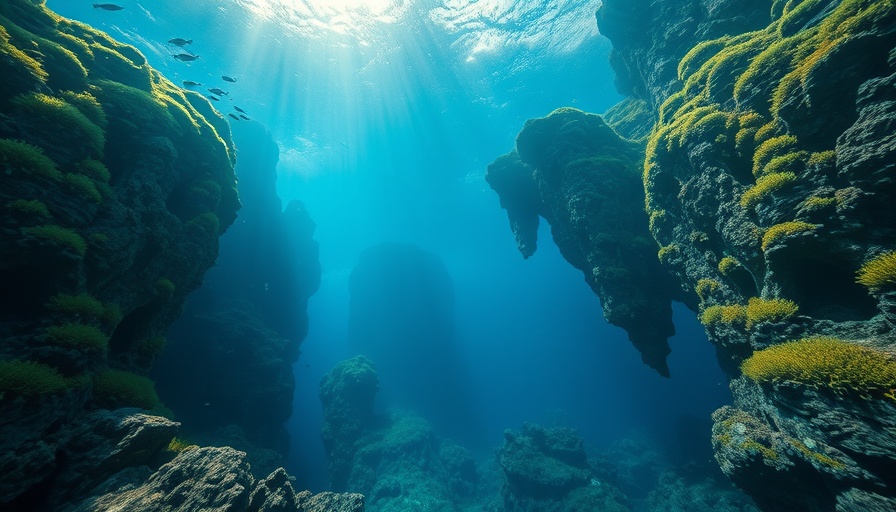
Understanding Ocean Darkening: A Looming Crisis for Marine Life
As the effects of climate change become increasingly evident, recent research reveals alarming changes in our oceans. Over the past two decades, approximately 21% of the world's oceans have been getting darker, severely threatening the ecosystems that rely on sunlight, known as photic zones. This study, published in Global Change Biology, highlights a significant reduction in the depth of these vital areas, signaling a serious ecological imbalance.
What Is Causing This Darkness?
The study identifies several contributing factors leading to ocean darkening, including nutrient loading from agricultural runoff, excessive rainfall, and the proliferation of algal blooms, all exacerbated by rising sea surface temperatures. Specifically, regions such as the Arctic, Antarctic, and parts of the Gulf Stream are facing the most significant impacts. Co-author Tim Smyth emphasizes, "If the photic zone is reducing by around 50 meters in large swathes of the ocean, animals that need light will be forced closer to the surface where they will have to compete for food. This could profoundly alter marine ecosystems."
The Impact on Ecosystems
The implications of reduced photic zones are far-reaching. With about 90% of all marine life depending on these illuminated areas for survival, disruptions are likely to be severe. The shrinking availability of sunlight could lead to competition for resources, jeopardizing not only marine species but also the broader ecological health of our planet. This could affect important species such as bees and fish, which play crucial roles in their environments.
Coping with Changes: What Can We Do?
For boutique hospitality professionals and eco-conscious lodging owners, this news should underscore the need for greater climate awareness. By embracing sustainability practices—like chaos gardening where diverse crops are grown and utilizing leather alternatives—you can contribute to habitat conservation and offer a greener future for both your business and the planet. Engaging with local nature reserves can also support biodiversity and education about marine ecosystems.
Future Predictions: The Long-Term Effects
Looking ahead, the long-term consequences of darker oceans could reshape marine biodiversity. Experts suggest that if current trends continue, we might witness a decline in coral reefs, critical to ocean health and a major draw for eco-tourism. As marine habitats shift, it could also affect the availability of seafood, which many depend upon for their livelihoods.
Taking Action for a Greener Tomorrow
With the world's oceans facing this darkening crisis, it is imperative for everyone, particularly those in the hospitality industry, to take proactive steps toward sustainability. By reducing microplastics and adopting eco-friendly practices within your operations, you can reduce your business's impact on these crucial ecosystems.
Ultimately, our oceans are not just a source of beauty and recreation; they are integral to our planet's health. It's time to advocate for clean oceans, integrate sustainable practices, and educate others about the importance of preserving marine life. Together, we can ensure a brighter, more sustainable future for the oceans we depend on.
 Add Row
Add Row  Add
Add 




Write A Comment